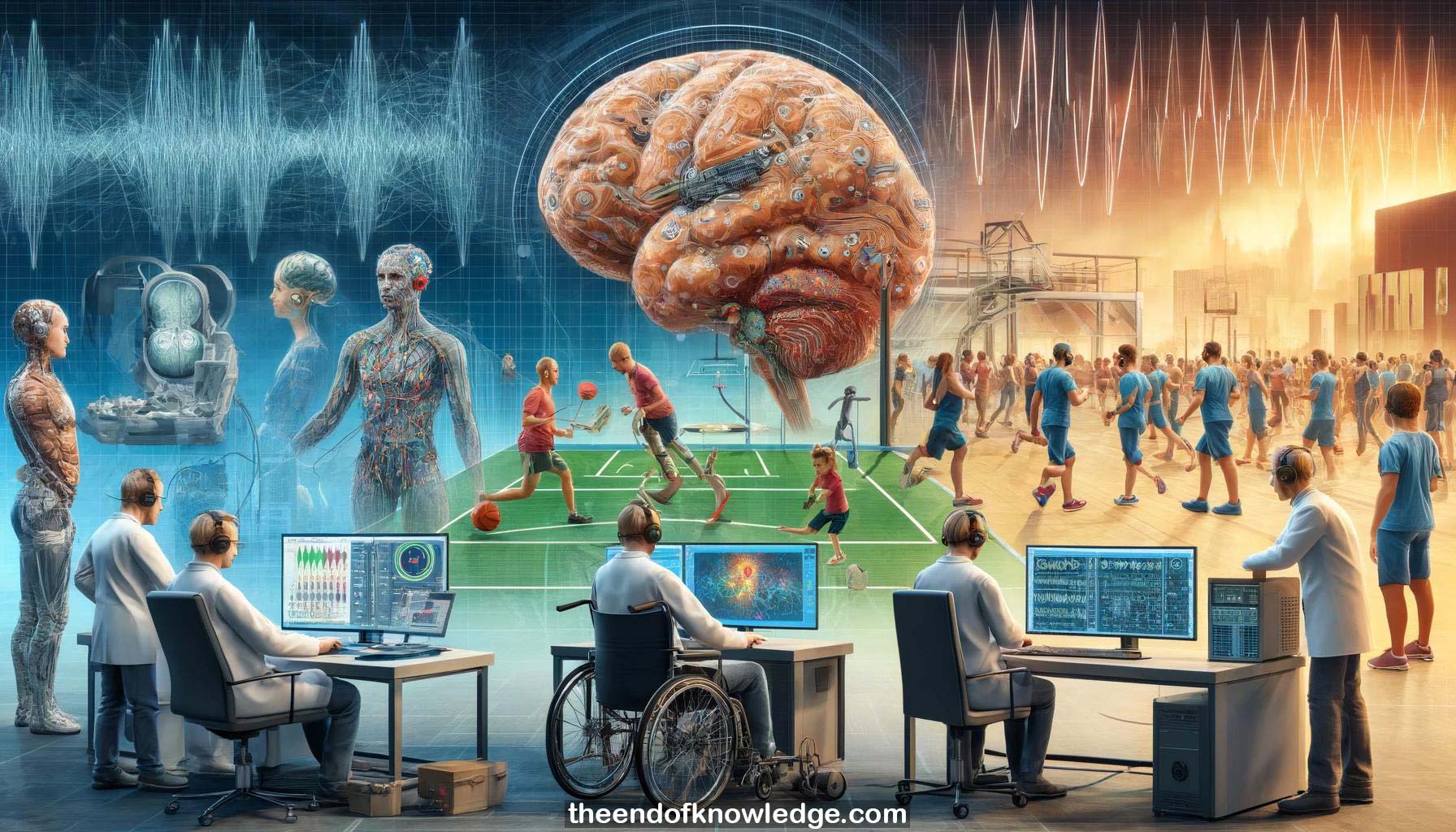 >
>
Concept Graph & Resume using Claude 3 Opus | Chat GPT4 | Llama 3:
Resume:
1.-Sheng Hong He did his PhD on brain-computer interfaces in China and is now a postdoc at Oxford University.
2.-Brain-computer interfaces record brain signals, process them, and use control signals for various applications like communication, control, and understanding diseases.
3.-He studied non-invasive BCIs using EEG and EOG in healthy people and those with spinal cord injury during his PhD.
4.-At Oxford, he uses invasive BCIs with local field potentials from deep brain stimulation to treat movement disorders like Parkinson's.
5.-He's also involved in projects using BCIs for people with disorders of consciousness.
6.-Parkinson's disease has motor and cognitive symptoms. Levodopa medication helps early on, but deep brain stimulation is used in advanced stages.
7.- DBS in the subthalamic nucleus dramatically improves motor symptoms, but has side effects and may require stimulation adjustments over time.
8.-Beta oscillations (13-30 Hz) in the STN correlate with medication status and symptom improvement. DBS suppresses this beta activity.
9.-Longer beta bursts (>500 ms) are more pathological and correlate with Parkinson's symptoms. Medication and DBS reduce beta burst duration.
10.-He designed a neurofeedback protocol to train Parkinson's patients to suppress beta bursts using a basketball computer game.
11.-Healthy participants and Parkinson's patients could reduce beta activity and improve reaction times after the neurofeedback training.
12.-An adaptive DBS system triggered by real-time STN beta activity was more effective than continuous DBS while delivering less stimulation energy.
13.-During movement, STN beta is suppressed but gamma increases. Adaptive DBS was equally effective as continuous DBS during movement.
14.-Gamma activity also reduces more during continuous vs adaptive DBS. There may be an optimal balance between beta and gamma suppression.
15.-STN beta oscillations are also modulated by uncertainty and correlated with slower movement reaction times under high uncertainty.
16.-TMS delivered at specific beta phases had differing effects on movement, suggesting beta phase impacts motor cortical excitability.
17.-He proposed training Parkinson's patients to suppress beta bursts using neurofeedback BCI to causally test the beta-motor relationship.
18.-Essential tremor causes tremor during posture holding or movement, but not at rest. DBS can treat it but has side effects.
19.-A closed-loop DBS system for essential tremor was developed to decode tremor-provoking movement and only stimulate during those periods.
20.-This adaptive DBS for essential tremor reduced tremor as effectively as continuous DBS while delivering 60% less stimulation energy.
21.-The adaptive DBS system detects movement using machine learning on cortical ECoG or LFP signals and switches stimulation on/off accordingly.
22.-In another approach, DBS is delivered at a specific tremor phase for maximal suppressive effect at lower stimulation intensities.
23.-Connectivity between the thalamus and tremor, especially in the contralateral thalamus, predicts DBS effect better than cortex-tremor connectivity.
24.-Patients with stronger thalamic connectivity may benefit more from VIM DBS, while others may need alternate targets like the motor cortex.
25.-DBS is less effective for gait issues in Parkinson's. An alternating DBS pattern aligned with gait rhythm improved gait.
26.-The pedunculopontine nucleus (PPN) may be a better DBS target for gait as it shows increased activity during stepping movements.
27.-PPN local field potentials show alternating activity patterns aligned with gait phase, which could inform closed-loop alternating DBS.
28.-A real-time gait phase decoding embedded DBS system could optimize stimulation timing to the locomotor rhythm to improve gait.
29.-While current adaptive DBS for Parkinson's uses simple thresholding, machine learning could extract more precise stimulation control signals.
30.-Testing advanced closed-loop DBS algorithms is limited by short time windows after implantation, but wireless systems could enable better optimization.
Knowledge Vault built byDavid Vivancos 2024